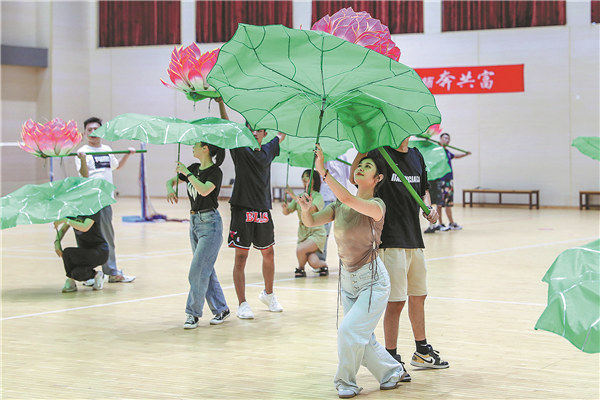

The formation and development of the dance marks a notable variant in the evolution of lantern crafts. It has incorporated modern lantern-making techniques that use wire and spun silk as materials. The dragon's body is made of dozens of bamboo rings adorned with lotus petals. Ropes connect the rings, allowing them to be folded or extended.
When stacked, they resemble a series of large lotus flowers; when extended, they form a colorful dragon with petals serving as dragon scales, appearing almost lifelike.
These skyward-reaching dragons, surrounded by the vibrant green of lotus leaves that resemble magnificent clouds, roll and dive; at times, they soar courageously, revealing fearless strength, and sometimes, they twist and twine gracefully, expressing a sense of emotion and sentiment, providing an overwhelming artistic visual delight to the viewer.
The art troupe adjusted the original performance format from the dancing of four dragons to the connection between two.
Through the perspective of a group of backpackers who travel to Huzhou, it showcased scenes of rippling lake water, swaying lotus leaves, fluttering colorful butterflies, lotus flowers transforming into dragons, and dragons turning back into lotus flowers.
"Since only two dragons are used in this performance, and they need to coordinate with each other, we strive for perfection in our positioning, aiming to best present the art of Baiyelong dance," said performer Gu Yue.
"We hope that this dance, which has been performed in Changxing for over 200 years, can be presented to the whole world in a brand-new way on the stage of the Asian Games," said Gu Keni, the general director of the program.